Home broadband has become very affordable these days. Speed has gone up, the price has come down, thanks to technology upgrades by providers as well as healthy competition. Broadband has become an integral part of our life, I recall a CDOT official’s apt comment “Roti, Kapada, Makan our Broadband”. ACT, Jio, Airtel are the key players and more players are entering the field (Starlink, Amazon).
Home automation is an exciting field, both for a technologist as well as an end-user. There are many areas to automate in the home and a growing list of products to choose from. What is gratifying is the growing number of Indian startups coming up with innovative home automation products.
Let’s look at a few practical scenarios where home automation is useful
- Automatically turn on the water heater at 5 in the morning on working days and 6 during weekends. If not manually turned off, turn off at 730am
- Based on my geolocation, turn on AC as I approach home so when I enter, it is cool.
- Turn on the living room light every day at 6 PM. When I say Goodnight to my Voice Assistant, turn off all lights. If not turn off all lights by 11 PM
- When my mother walks out of her bedroom, turn on the corridor light when it is dark
- Turn off the fan at 6 AM if I have not manually turned it off
- As I step out of the office and walk towards my car, I want to turn on the car AC so that it is cool when I get into the car
I would categorize the automation areas into two – useful & affordable and exotic & expensive. While leaving home, you forgot to turn off a light or AC, you can now use your mobile app or even a voice command to turn it off. This is an example of a useful and more important, affordable application. The main door lock, color LED lights, automated curtains, automated drip irrigation fall in the exotic and expensive category.
Let’s look at how we can implement home automation from an end-user perspective who is not into technology. The starting point is a reliable broadband connection. Broadband high speed/bandwidth is not a must but desirable. As I mentioned earlier, the price has dropped over the past year, you can get a 100mbps connection with less than ₹1000 per month.
Some operators like Airtel and Jio provide IP voice call facilities along with broadband so you can surrender your existing land phone and save cost. At home, we want the wifi signal to be covering the entire area including the balcony/lawn. A mesh router system is preferred to a traditional router with an extender. Mesh routers ensure that there is no dead spot. Typically for a 5000 sq ft coverage, three mesh routers are sufficient. TPLink provides 3 box mesh routers at less than Rs 9000.
Once reliable broadband is in place, the next is to decide what is to be automated.
Plugs and switches:
If you have a device that connects to a plug outlet (like a table lamp or diffuser) and you want to automate, you can buy a smart plug. If you want to control 15A appliances like AC or water heater, you can buy a 16A smart plug for ₹1000 or less. Some of these 16A smart plugs have a power measurement function so it becomes easy to calculate and see the trend of your power consumption for AC or water heaters. There are many vendors with these products giving us customers a good choice. There are local Indian brands like SynxGen, Oakter, Helea, SmarDen, Wipro, Zebronics, Syska and Chinese/Taiwanese brands like TPLink, Sonoff, D3D, DLink. While choosing plugs, it is worthwhile to choose them which provide a manual override switch that allows one to operate the plug manually.
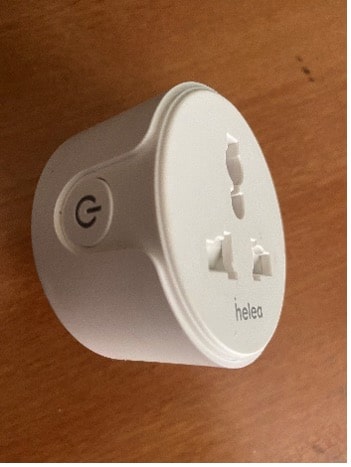
Lighting:
If it is a light, decide whether you want to automate an existing non-smart bulb or use a new smart bulb. For existing lights, there are modules that get mounted inside the switch panel and allows us to operate the light with either the existing old manual switch or thru remote control, either thru the app or voice. Oakter provides a quad switch module that allows us to automate 4 switches. If you are adding a new light, you can buy a smart bulb/tube light for about 800. Vendors like Wipro, Syska provide both monochrome or color LED bulbs.
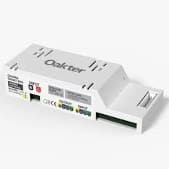
Fan, AC:
If you plan to buy a ceiling fan or AC, consider buying them with a wifi interface so they can be controlled and automated. Atomberg is a popular Indian fan brand providing BLDC based design with home automation feature, available to purchase thru Amazon/Flipkart. They have supported this article by providing a special discount coupon for readers to get a special price. Atomberg uses a BLDC design for the basic fan instead of a traditional induction motor which saves electricity and less noise and less heat. Many other appliances like washing machines, dishwashers come with home automation (IoT) feature which allows you to monitor/control them even if you are away from home. Through this article, Atomberg has provided a special discount coupon code AtombergEFY to EFY readers to get a special price while ordering a fan.
TV:
Most of the new TVs in the market are smart and they come with an interface to integrate with voice assistants. For eg, Sony provides an app that allows you to control the TV from mobile and skill to allow you to control the TV with your voice.
Security camera:
Home security cameras are very affordable and easy to integrate. Here again, there are many vendors, all of them Chinese. The vendor provides an app to control the camera – you can pan, zoom, record, enable motion detection etc. While selecting vendor, choose IP cameras instead of an analog camera with record facility. Choose one with built in SD card for storage and motion sensor to record when camera detects motion.
Motion sensor:
Motion sensing is another area gaining popularity since these sensors have become affordable. Philips motion sensor is a product worth mentioning. This allows you to take an action if motion is sensed. As an example, you can mount the motion sensor on a corridor and if anyone crosses, it can be programmed to turn on the corridor light. Philips motion sensor works on built in battery which lasts for a few years, allowing us to avoid wiring.
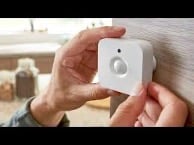
Curtain automation:
Curtain automation uses a motor with a LAN interface so that it can be controlled by a mobile app/voice control. There are not many vendors – SynxGen is an Indian startup providing curtain automation among other products https://synxgen.com/smart-curtain/ Switchbot https://www.switch-bot.com/products/switchbot-curtain is another Chinese vendor with no local support.
Drip irrigation:
If you have a terrace/balcony garden, you can automate watering the plants using a controller with drip pipes. This controller connects to home router and thru mobile you can control the watering schedule. This is useful if you are forgetful or are leaving home on vacation and want the plants to be watered. For a bigger area, you get products that irrigate based either on local weather data or sensing moisture level in the ground.
Smart MCB:
This is an MCB with a wifi interface, which allows you to turn on/off the MCB remotely. More useful feature of smart MCB is that you can monitor power consumption pattern of your house. You may see details at https://synxgen.com/smart-mcb/
Connected car:
This is an extension of home automation to include controlling your car. Many cars including the lower budgeted ones, come with an e-sim to provide connectivity of the car thru your mobile. You can use this to turn on AC in your car as you approach the car from office, sometimes even start the engine in idle mode, lock/unlock the doors etc. Car diagnostics can be run off your mobile app while you are away from the car and any corrective action like a service call can be taken.
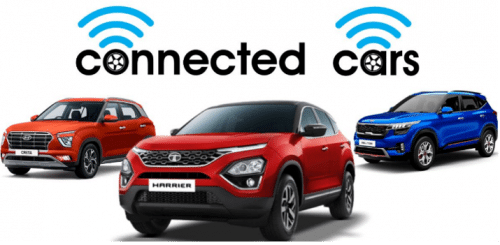
SynxGen has supported this article by providing a discount coupon SYNXGEN21EFY which when used while ordering from their website.
All the above applications come with hardware with its own vendor specific apps for both android and iOS phones. It is prudent to choose one vendor which provides all the home automation products so one app controls all devices making the usage efficient. However, we would desire that the apps from various vendors be standardized so that one app controls multi-vendor products. Many times, when you buy products from multiple vendors, you get confused on which app to use a particular device. Also many such apps also clutters your phone/tab.
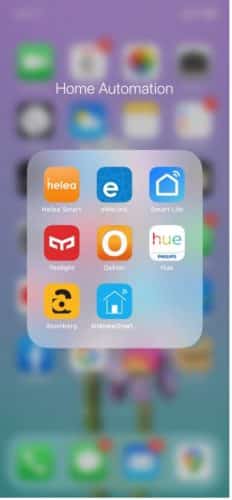
The next step is to decide whether you need voice control also to activate these home automation products. Though it is a bit exotic, this does not add to the cost if you already have a voice assistant at home. There are three main vendors in the VA area – Amazon Alexa, Google Assistant and Apple Siri. Alexa controls 70% market share and provides affordable hardware which act as a receiver to hear your voice as well as a speaker to acknowledge your command. The speaker also doubles up as a Bluetooth speaker to cast audio from your phone. The home automation vendors provide an interface to Alexa, Siri and google home. Alexa for example, allows you to write simple scripts to schedule any automation. These voice assistants are evolving as we speak with many refinements. This is an exotic feature, though sometimes it becomes useful if elderly people at home are trained to use – for eg, turning on light, fan or even leave a message with another person.
From a technology perspective, the home automation products rely on ethernet protocol and Zigbee. If there are multiple devices, the vendor usually provides a hub/bridge to which all devices connect using Zigbee protocol and the hub connects to home broadband. Philips Hue lighting system uses this concept.
You can use the mobile app for the home automation devices to control manually or you can use a scripting platform provided by the voice assistants to automate. In Amazon Alexa, it is called Routine. You can write a routine with steps. You can define the conditions for which you want the action to be taken – a defined time, motion sensor detects movement). Once condition is defined, you can define what action to be taken – turn on/off lights/plugs, play your favorite music from Spotify, JioSaavan, TuneIn.
Amazon Alexa provides several third-party interfaces called Skills which allows you to go beyond the hardware-based automation. For eg, you can ask Alexa to tell how the local weather is or share your calendar events. You can ask Alexa to share the movies running in your local theatres.
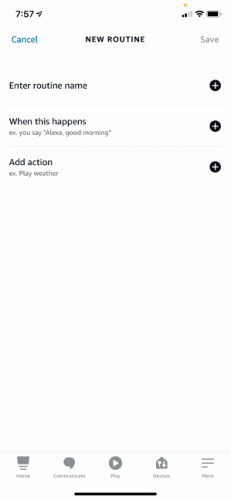
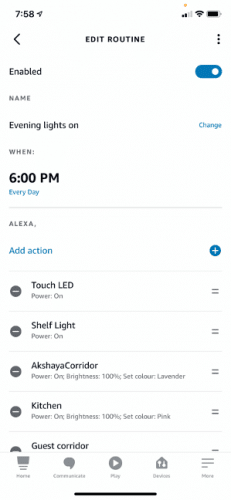
Let us look at the typical cost to set up home automation. You can start with automating say one room, and once satisfied, you can expand to other rooms.
| Running cost | |||
| Broadband | 1000 | per month | |
| Fixed cost | |||
| LED lights | 6000 | (6 lamps) | |
| 5A plugs | 4000 | (4 plugs) | |
| 16A plugs | 2000 | (2 plugs – 1 for AC, 1 for room heater) | |
| Motion sensor | 1000 | (1 sensor) | |
| Security camera | 9000 | (3 cameras) | |
| Total Fixed cost | 22000 | ||
Summary
Home automation is a growing, exciting field with many possibilities. With many players offering competing products, prices are dropping which makes these affordable for customers. Though many features are more exotic, there are many features that are cost-effective and useful. Many of these can be installed by us needing no special technical skill.
V.V. Pathy is working for a technology company in Bengaluru and is an electronics enthusiast






Beautiful article in the fields of IOT application in india. Thanks
You are most welcome.